Is it worth it to go organic? Here’s what you need to know about reading organic labels, and what it means for your health.
What does it mean to go “organic”? With more people interested in buying locally grown, pesticide-free produce, we wanted to find out what organic labels really mean, and if it’s worth it to spend that extra dollar.
We’ll also show you how to tell if your food is truly organic – there are four different levels – and how the difference between organic and conventional food affects your health.
Fight inflammation and create easy, healthy meals! We've created a FREE 7-Day AIP Meal Plan
Get Your FREE 7-Day AIP Meal Plan here.
What Does Organic Food Mean and Who Regulates It?
The word “organic” means to drastically reduce the use of unnecessary chemicals in consumable products. Here’s a quick breakdown of what these chemicals are:
- Synthetic fertilizers: These manufactured substances are used to help increase plant growth. (Think: steroids for plants).
- Pesticides: Though plants can naturally develop their own biological defense mechanisms, most pesticides refer to the chemically created kind used to repel insects, bacteria, and weeds.
- Sewage sludge: Solid, semisolid, or liquid residues from water treatment plants that can be used to stimulate plant growth. It’s basically a way that conventional farmers can reuse treated wastewater from septic tanks. (Gross!)
- Genetically modified organisms (GMOs): This is when technology is used to genetically alter a plant’s DNA. To be certified organic, farmers can’t use any GMOs when growing plants, and they can’t be fed to their animals, either. (1)
Now, let’s take a look at who’s in charge of regulating organic farming practices within the US:
The United States Department of Agriculture (USDA)
The USDA enforces organic regulations. Without official approval by the USDA, vendors cannot claim their products are organic. The certification process begins with a three year transition period, to which farmers must avoid using prohibited substances in all farming practices. Farmers must then find a USDA-accredited agent, pay application fees, and wait for an inspector to perform an on-site evaluation of their farming practices. Once this is complete, the certifying agent reviews the reports and determines if they are qualified for proper certification. However, the process doesn’t end there. In order to maintain their organic status, they must pass yearly inspections. This ensures that organic farmers remain consistent in organic farming procedures. (2)
The Environmental Protection Agency (EPA)
The EPA regulates which pesticides are safe to use and how much of it can be safely used in US produce. To meet the EPA organic standard, the threshold must be below 5% of what is allowed in conventional farming. This leaves farmers with very little leeway in cases where pesticides inadvertently seep in from neighboring farms or shared handling facilities. (3)
The National Organic Program (NOP)
A subdivision of the USDA, this organization advises regulations with a team of board members made up of farmers, environmentalists, consumers, produce handlers, scientists, retailers and USDA-certifying agents. Members vote on which synthetic substances should be allowed, and which prohibited in organic farming, which is published as a National List (4). Harmful toxins such as strychnine and arsenic are just a few examples of prohibited substances included on the list. (5)
How to Tell If Your Food is Truly Organic
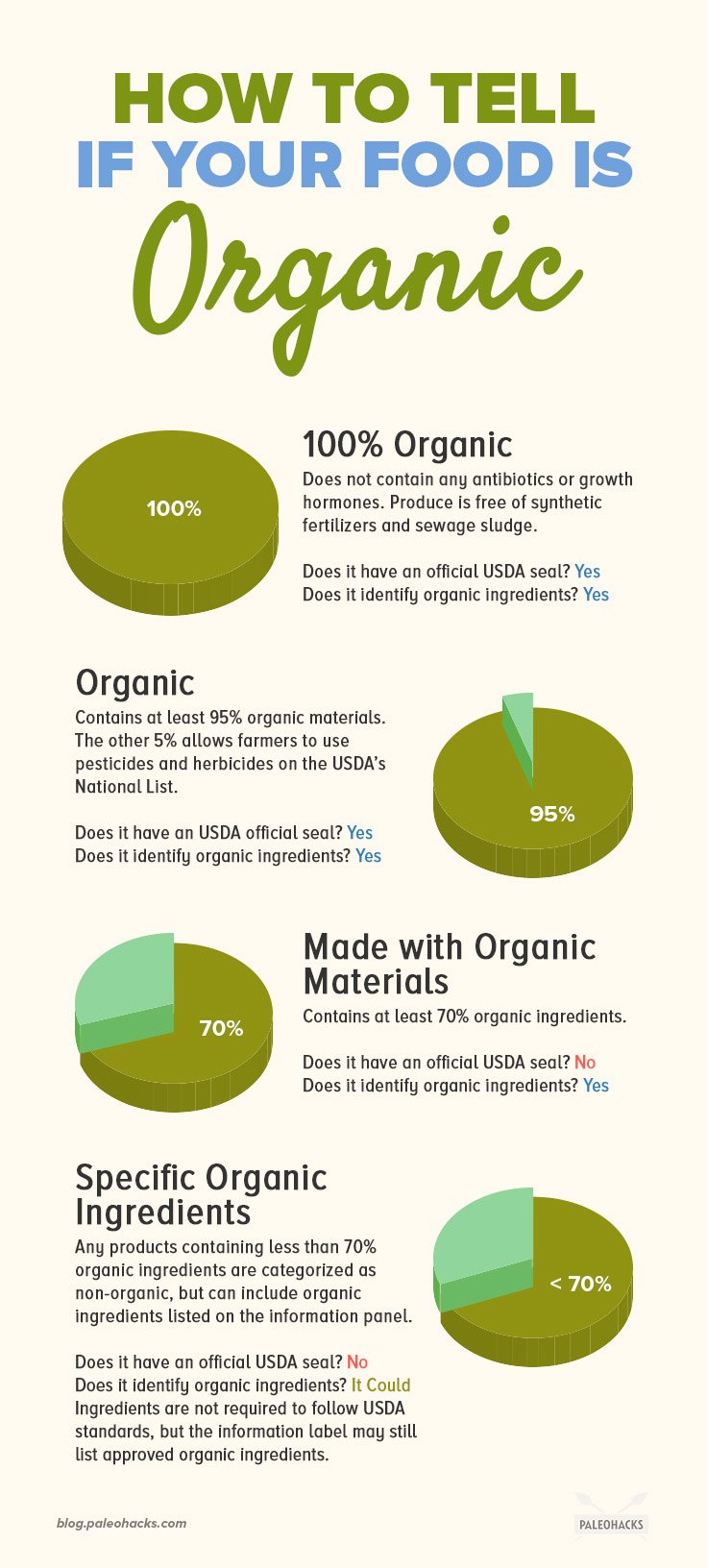
Want to know if your food is truly organic? There’s no real black and white answer. In fact, the USDA categorizes organic products into one of these four levels (6).
1. 100% Organic
All meat and dairy products labeled 100% organic do not contain antibiotics or growth hormones; while produce are free of synthetic fertilizers and sewage sludge. (7)
- Does it have an official USDA seal? Yes.
- Does it identify organic ingredients? Yes.
2. Organic
Labels reading “organic” require that at least 95% of ingredients are made from organic materials. The other five percent allows farmers to use pesticides and herbicides allowed on the USDA’s National List.
- Does it have an official USDA seal? Yes.
- Does it identify organic ingredients? Yes.
3. Made with Organic Materials
These foods need to be made up of at least 70% organic ingredients.
- Does it have an official USDA seal? No.
- Does it identify organic ingredients? Yes.
4. Specific Organic Ingredients
Any products containing less than 70% organic ingredients are categorized as non-organic but can include organic ingredients listed on the information panel.
- Does it have an official USDA seal? No.
- Does it identify organic ingredients? It could. Ingredients are not required to follow USDA standards, but the information label may still list approved organic ingredients.
The Great Debate: Organic vs. Conventional Food
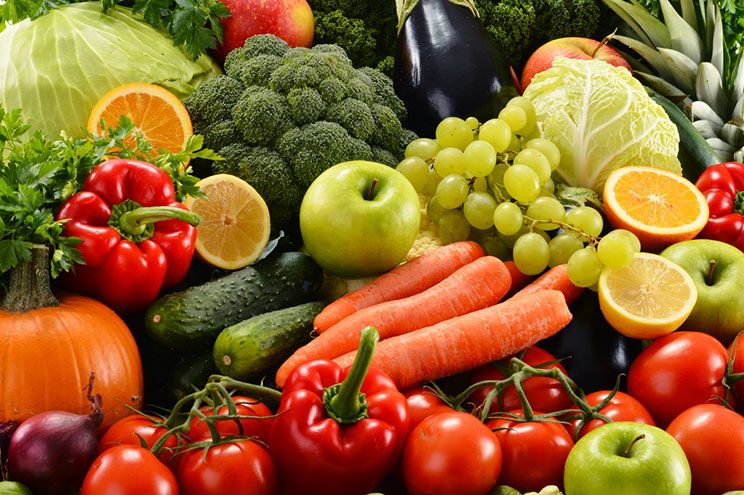
So, is the higher cost of organic products really worth it? Researchers, farmers, and consumers have debated whether organic produce, meat, and dairy are truly better for your health.
PRO ORGANIC:
“I think it’s pretty clear that organic practices are less destructive to the ecosystem,” says Carolyn Dimitri, applied Ph.D. economist and associate food professor of food studies at New York University. “You can’t use the majority of the synthetic pesticides that are used on conventional farms. And those really have been shown to contaminate soil and can contaminate water bodies and disrupt the local biodiversity.”
Buying organic products might be more costly, but when more consumers get behind the organic movement, more farmers can invest in organic certification. The good news is that more than $43 billion dollars were spent on organic-based products in 2015, and that number is on the rise. (8, 9) [tweet_quote]Researchers have linked organic produce with higher rates of antioxidants that can help reduce the risk of certain types of cancers and neurodegenerative diseases.[/tweet_quote]
Fewer pesticides equal fewer man-made chemicals entering your body. Pesticides have been linked to a toxic build-up of cadmium, a heavy metal, in liver and kidneys. Researchers have found 48% less cadmium in organic crops. (10)
Studies also suggest that organic farming practices improve local biodiversity, biological cycles, and soil activity. To put it simply, this means that plants, insects, birds, and other organisms are much more likely to cohabitate on organic farms. (11)
Finally, researchers have linked organic produce with higher rates of antioxidants that can help reduce the risk of certain types of cancers and neurodegenerative diseases. (12)
PRO CONVENTIONAL:
Not everyone is convinced that the research done on organic products tell the whole story.
“The people that started making a big fuss about pesticides never did controlled [studies]. They just picked one little [excerpt] and blew it out of proportion,” says Bruce Ames, professor of biochemistry and molecular biology emeritus at UC Berkeley.
Ames co-speared a study that found synthetic chemicals were no more dangerous than natural chemicals produced by plants. (13)
Arguments have also been made that organic foods don’t offer more nutritional value than conventional foods. Stanford did a study recently that showed no major differences in vitamins, protein, or fat in organic foods versus conventional (14) However, the same study also concluded that there were 30 percent fewer pesticide residues in organic produce, which is worth taking into consideration when it comes to health and environmental concerns.
The Bottom Line
While it’s probably safe to say that organic foods are best, it isn’t everything. Remember that there are levels of certified organic products you can buy, and you should also take your budget into consideration before taking the full leap into 100% organic products. Either way, eating conventionally farmed fruits and veggies is better than not eating them at all. You’ll still get plenty of healthy vitamins and minerals!
Helpful Tips to Properly Wash Away Pesky Pesticides
Tips for Fruits and Veggies:
- Make sure to wash your hands thoroughly with warm water and soap prior to rinsing.
Never use soaps or detergents to wash your produce. - Use a vegetable brush to scrub off produce with thick or rough skin (like carrots and cauliflower).
- Soak vegetables with hard to reach grooves and folds in cold clean water for 1-2 minutes.
- You can also soak or spray produce with a vinegar and water solution, be sure to rinse well with cold water afterwards.
- Always wash your produce prior to peeling, since contaminants can still be spread from your peeler/knife.
- Use a clean paper towel to dry your fruits and veggies when finished.
Tips for Leafy Greens:
- Remove roots from large lettuce heads and rinse the leaves under cold running water.
- Smaller greens, like spinach and arugula, can be soaked in a bowl of cold water for 30 seconds. Swirl them around a bit to shake off any excess dirt, then transfer them to a strainer to rinse.
- Always store your greens in the refrigerator until you’re ready to use them.
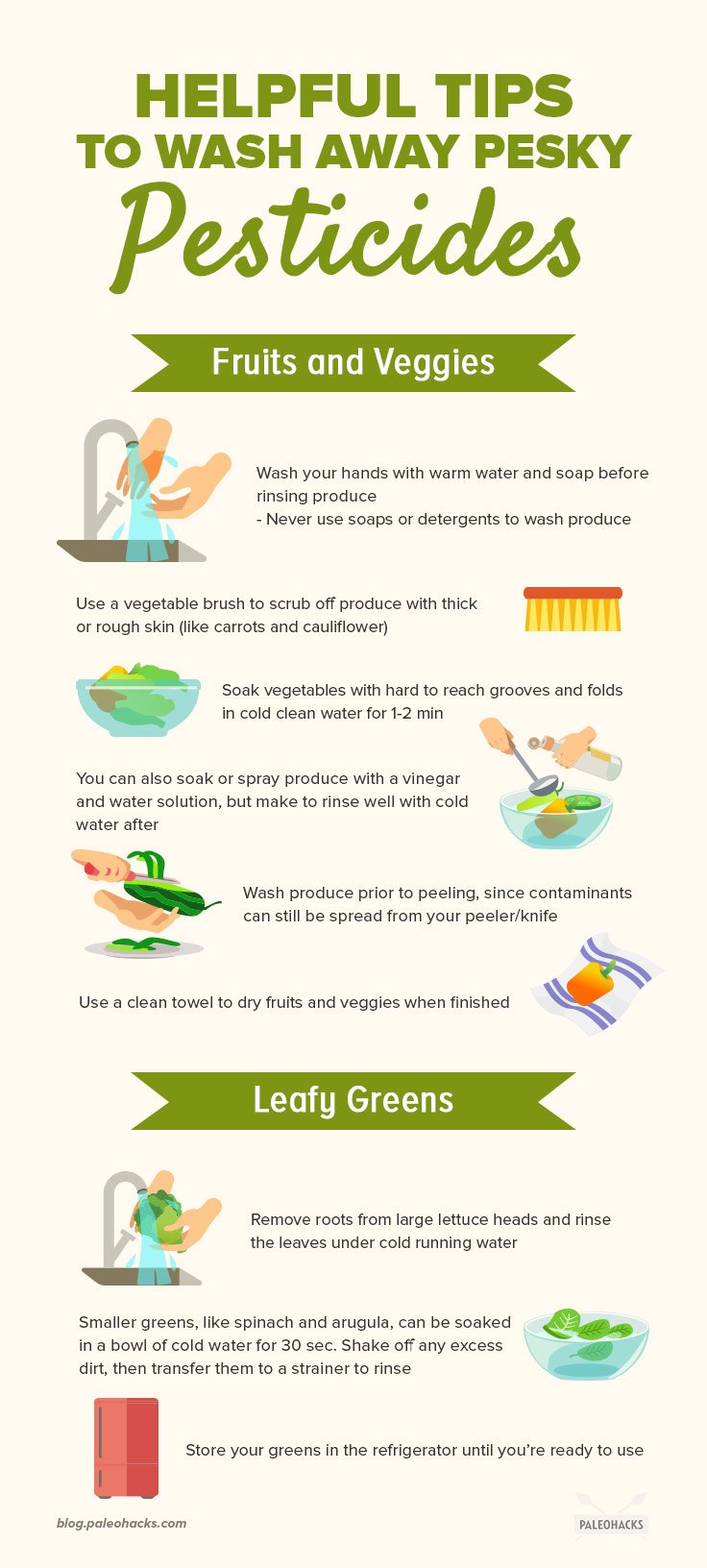
(Read This Next: Cage-Free vs. Free-Range vs. Pasture-Raised – Here’s What They Actually Mean)


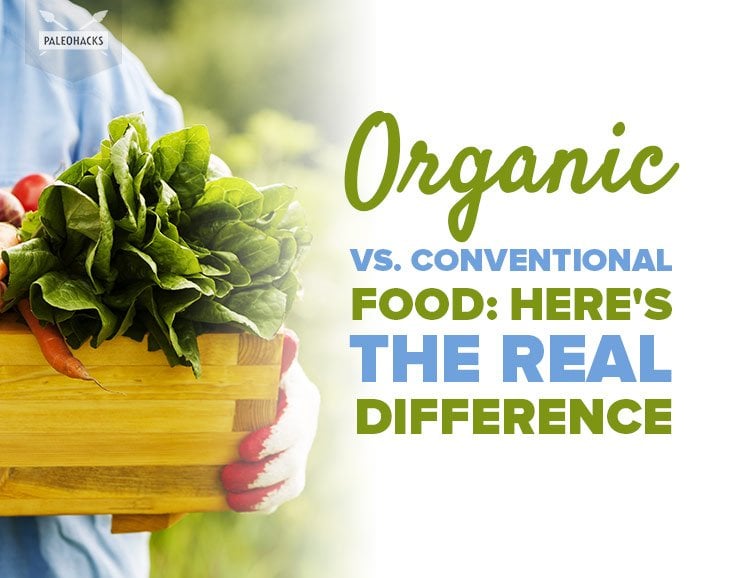
 Low Carb Keto Tasty Buns
Low Carb Keto Tasty Buns
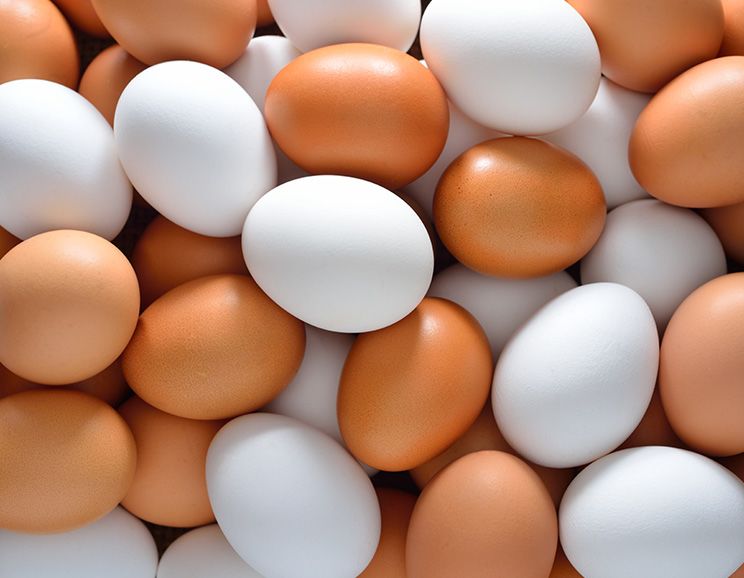
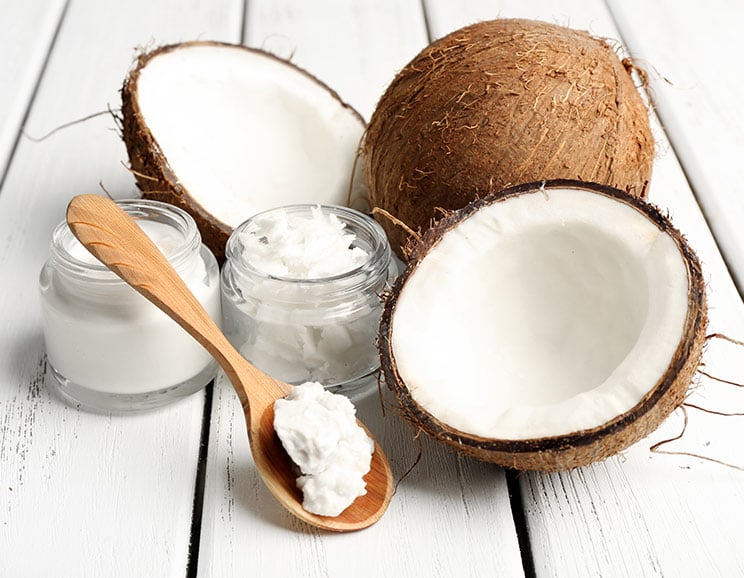
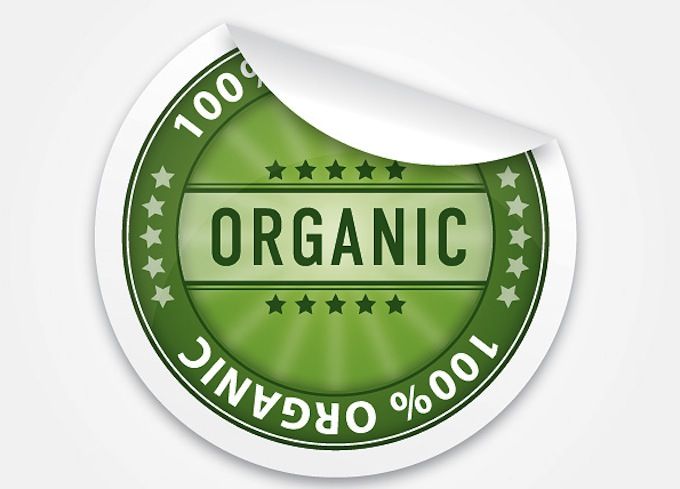

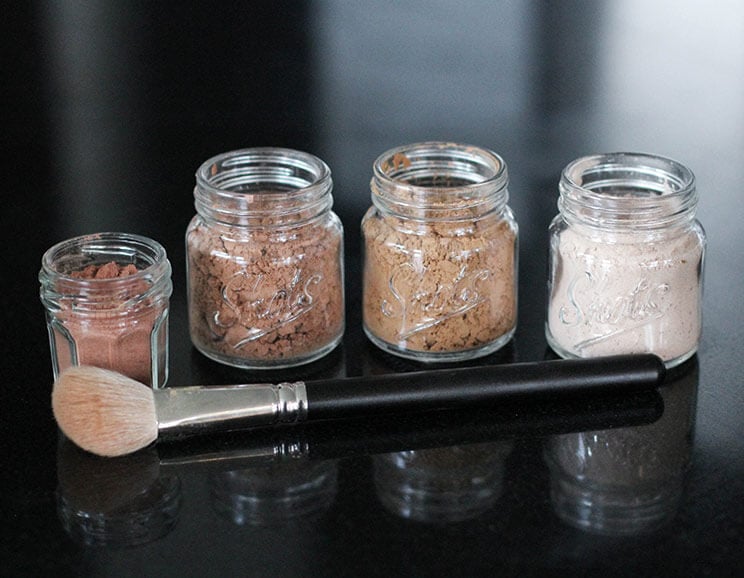


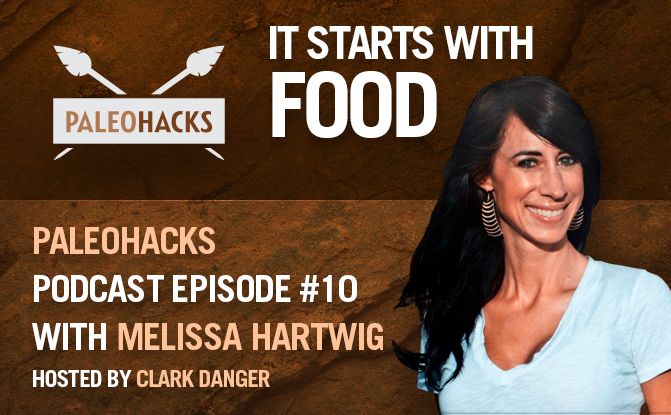

Show Comments